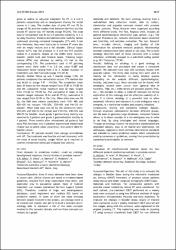Evaluation of interfractional bladder doses for two different patient positioning methods in prostate cancer

View/
Access
info:eu-repo/semantics/openAccessDate
2015Author
Altınok, AyşeAcar, Hilal
Rzazade, Rashad
Küçük, Nadir
Küçükmorkoç, Esra
Doyuran, Mine
Mabhouti, H.
Çağlar, Hale Başak
Metadata
Show full item recordCitation
Altınok, A., Acar, H., Rzazade, R., Küçük, N., Küçükmorkoç, E., Doyuran, M. ... Çağlar, H. B. (2015). Evaluation of interfractional bladder doses for two different patient positioning methods in prostate cancer. Radiotherapy and Oncology içinde (S677-S678 ss.). https://doi.org/10.1016/S0167-8140(15)41245-9Abstract
Purpose/Objective: MR imaging following needle implantation in high dose rate brachytherapy (HDR BT) provide more anatomical details for improved definition of the prostate gland, organs at risk, and needles. The purpose of this study was to evaluate the introduction of MRI guided HDR BT, including time consumption, dose volume parameters, and changes over time. Materials and Methods: A team of radiation oncologists, physicists, radiologists, and nurses was trained to perform MRI guided HDR BT. Between September 2012 and November 2014, 42 consecutive high risk prostate cancer patients received two times HDR BT of each 8.5 Gy after EBRT. Time was recorded for initiation of anaesthesia, end of ultrasound guided needle implantation, MR scan, and HDR BT delivery.
WoS Q Kategorisi
Q1Source
Radiotherapy and OncologyVolume
115Issue
Supplement: 1Collections
- Bildiri Koleksiyonu [515]
- WoS İndeksli Yayınlar Koleksiyonu [6433]

















